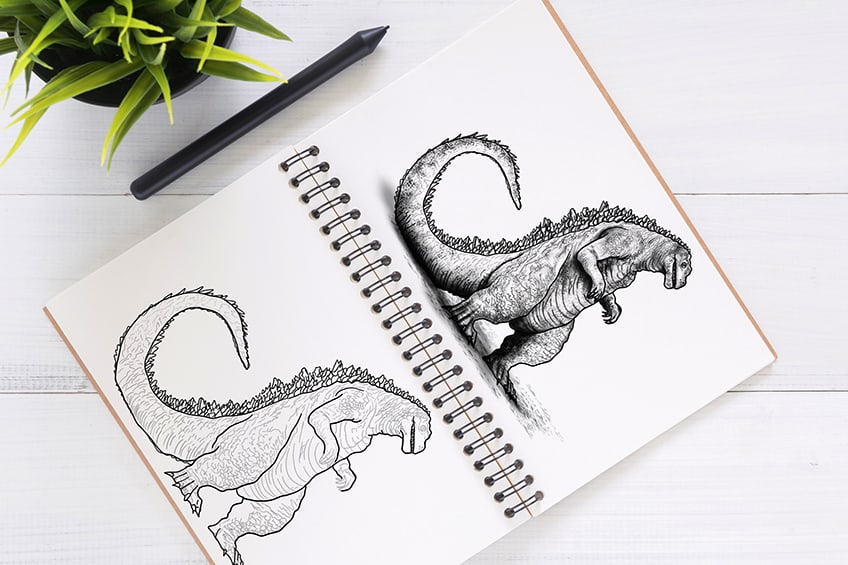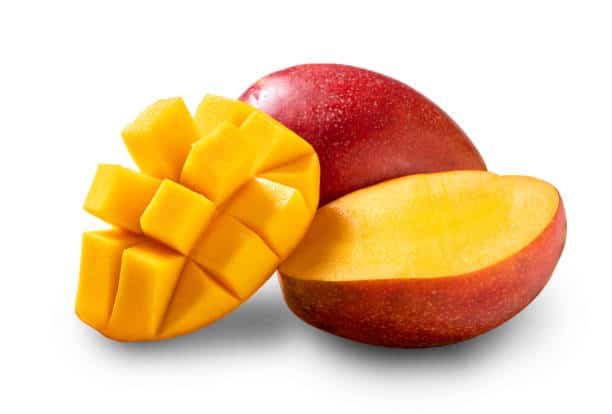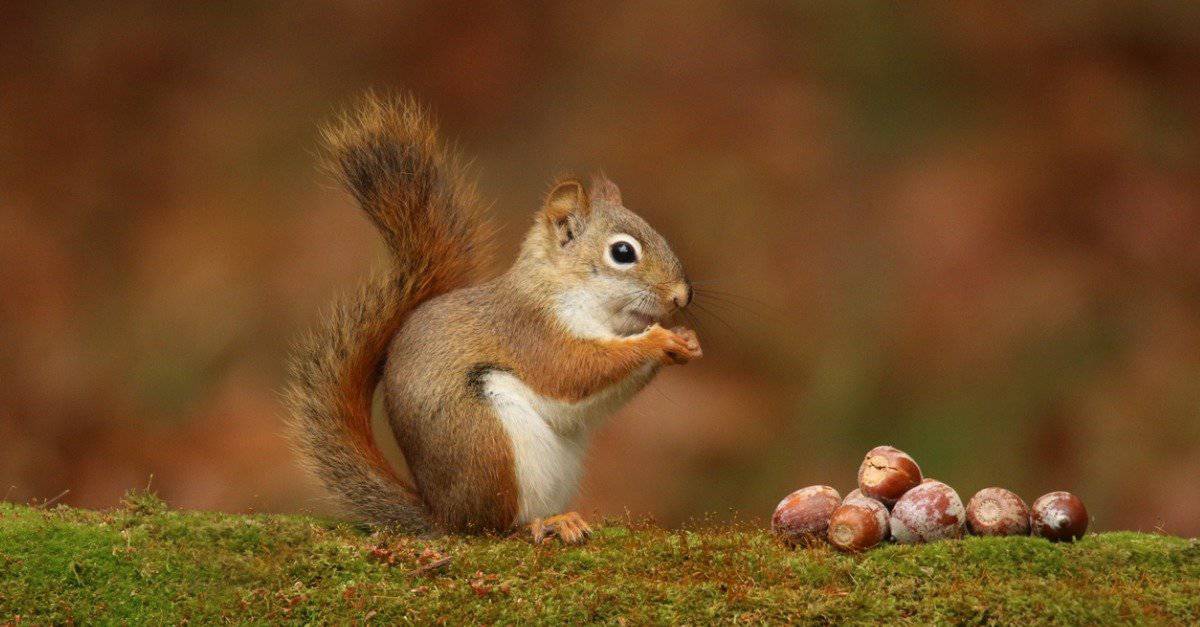Godzilla, the iconic radioactive dinosaur, has been known for generations for its awe-inspiring presence and destructive power. While the kaiju king may seem intimidating to draw, with his complex form and imposing stature, mastering the art of Godzilla illustration is not as daunting as it may appear.
This comprehensive guide discusses the techniques and tips required to bring Godzilla to life on paper, empowering aspiring artists and enthusiasts to capture the essence of this legendary creature.
Table of contents
- What are the Essential Drawing Tools and Techniques for Drawing Godzilla?
- How Can I Capture Godzilla’s Distinctive Features?
- How has Godzilla’s design evolved?
- How has Godzilla been interpreted and reimagined in various artistic mediums like painting, sculpture, and digital art?
- How has Godzilla’s influence extended to other art forms, such as literature, music, and film?
- What are some of the challenges and considerations when drawing Godzilla in different environments and scenarios?
- How can artists effectively convey Godzilla’s emotions and intentions through their drawings?
- How can aspiring artists and enthusiasts utilize Godzilla as a subject for creative exploration and personal expression?
- FAQs
- Conclusion
- References
- Recommendations
What are the Essential Drawing Tools and Techniques for Drawing Godzilla?
Before embarking on your Godzilla drawing journey, ensure you have the necessary tools: a variety of pencils (ranging from HB to 6B), an eraser, a sharpener, and drawing paper of suitable size and quality.
Pencil Grip and Control
Proper pencil grip is crucial for achieving precise lines and controlled shading. Hold the pencil near the tip, using a light grip that allows for flexibility and control. Practice basic strokes, such as lines, curves, and circles, to develop hand-eye coordination and muscle memory.
Sketching and Proportion
Start by creating a light and loose sketch, focusing on capturing the overall shape and proportions of Godzilla. Use reference images to ensure accuracy and maintain a consistent scale throughout the drawing.
Form and Structure
Refine the sketch by adding details to Godzilla’s body, such as his muscular limbs, spiked dorsal fins, and powerful tail. Pay attention to the anatomy and structure of the creature, ensuring that the different body parts connect naturally.
Shading and Texture
Enhance the dimensionality of your Godzilla drawing by incorporating shading and texture. Use varying pencil grades to create areas of light and shadow, emphasizing the contours and details of the creature’s form.
Read also: Why Do Phospholipids Form A Bilayer In Water?
How Can I Capture Godzilla’s Distinctive Features?
1. The Menacing Head
Godzilla’s head is characterized by its sharp teeth, piercing eyes, and prominent horns. Draw the head with a slightly downward tilt, conveying a sense of menace and power.
2. The Spiky Dorsal Fins
The dorsal fins are a defining feature of Godzilla’s silhouette. Draw them as jagged and pointed, using varying line weights to create a sense of depth and dimension.
3. The Powerful Tail
Godzilla’s tail is a formidable weapon, capable of sweeping away buildings and causing destruction. Draw the tail with a sense of fluidity and strength, making it an extension of the creature’s power.
4. The Fiery Atomic Breath
Godzilla’s signature atomic breath is an iconic element of his design. Depict the breath as a radiant beam of energy, emanating from Godzilla’s mouth and illuminating the surrounding environment.
How has Godzilla’s design evolved?
Godzilla’s design has undergone significant transformations since his debut in 1954, reflecting the changing cultural and social dynamics of the time. Early Godzilla designs emphasized his monstrous and destructive nature, mirroring the anxieties surrounding nuclear warfare and the Cold War.
As the franchise evolved, Godzilla’s portrayal shifted to encompass more heroic and even sympathetic qualities, reflecting the changing attitudes towards environmentalism and the power of nature. His design became more streamlined and stylized, appealing to a broader audience and solidifying his status as a pop culture icon.
Read: Tech Troubleshooting: Simple Steps on How to Restart Your Chromebook
How has Godzilla been interpreted and reimagined in various artistic mediums like painting, sculpture, and digital art?
Godzilla’s image has transcended the realm of drawing, inspiring artists across diverse mediums to explore his iconic form and symbolism. Painters have captured Godzilla’s power and menace through bold brushstrokes and vibrant colors, while sculptors have translated his hulking physique into three-dimensional masterpieces.
Digital art has opened up new frontiers for Godzilla’s artistic representation, allowing artists to create dynamic and immersive depictions of the creature. Motion graphics and 3D modeling have brought Godzilla to life in animated sequences, while digital illustrations have presented him in fantastical and surreal environments.
How has Godzilla’s influence extended to other art forms, such as literature, music, and film?
Godzilla’s impact extends far beyond the realm of visual arts, permeating various art forms and leaving an indelible mark on popular culture. Godzilla-themed novels and comic books have expanded the creature’s mythology, while Godzilla-inspired music has captured his destructive power and enduring legacy.
Godzilla’s cinematic presence has been particularly influential, with numerous films showcasing his rampages and encounters with other iconic monsters. These films have cemented Godzilla’s status as a symbol of cinema, inspiring filmmakers to explore themes of environmentalism, urban destruction, and the duality of nature.
What are some of the challenges and considerations when drawing Godzilla in different environments and scenarios?
Drawing Godzilla in different environments requires careful consideration of perspective, scale, and lighting. When depicting Godzilla in urban settings, it is crucial to maintain a sense of scale, ensuring that the creature dominates the cityscape.
In natural environments, Godzilla’s presence should complement the surroundings, whether it’s towering over lush forests or emerging from the depths of the ocean. Lighting plays a significant role in creating atmosphere, with dramatic lighting techniques enhancing Godzilla’s menace or highlighting his imposing form.
How can artists effectively convey Godzilla’s emotions and intentions through their drawings?
Conveying Godzilla’s emotions and intentions through drawing requires a deep understanding of the character’s personality and the context of the scene. Subtle changes in facial expressions, body language, and posture can effectively communicate Godzilla’s anger, menace, or even curiosity.
Artists can also utilize visual cues, such as the intensity of shading or the direction of Godzilla’s gaze, to further enhance the emotional message of the drawing.
See also: How to Make a Tree in Little Alchemy: Creative Genius in Game Crafting
How can aspiring artists and enthusiasts utilize Godzilla as a subject for creative exploration and personal expression?
Godzilla’s rich history and iconic status provide a vast canvas for creative exploration and personal expression. Artists can use Godzilla as a metaphor for various themes, such as environmentalism, societal issues, or personal struggles.
By reinterpreting Godzilla’s image through unique perspectives and artistic styles, artists can create meaningful and impactful works of art that challenge conventional portrayals and offer fresh insights into the King of the Monsters.
FAQs
Draw scales in rows or clusters, using short, overlapping lines or small, rounded shapes. Vary the size and density of the scales to create a sense of natural variation.
Use exaggerated proportions, such as large hands and feet, to convey a sense of power. Emphasize the creature’s sharp teeth, piercing eyes, and prominent horns to create a menacing expression.
Godzilla can be incorporated into various drawing styles, from realistic to cartoony. Experiment with different techniques, such as using bold outlines or exaggerated features, to create unique interpretations of the character.
Use dynamic poses, such as a mid-stride or a mid-roar, to suggest movement. Incorporate elements like dust clouds or debris to further enhance the sense of action and impact.
Numerous online tutorials, reference images, and step-by-step guides can provide valuable guidance and inspiration. Additionally, consider joining online art communities or attending workshops to learn from experienced artists.
Conclusion
Drawing Godzilla is about capturing the essence of a legendary creature, and imbuing it with your unique artistic vision. By mastering the techniques and tips outlined in this guide, you can embrace the challenge, embrace your artistic spirit, and let the King of the Monsters emerge from your imagination, ready to conquer the world of art.
References
- artincontext.org – How to Draw Godzilla – Create a Monstrous Godzilla Drawing
- blitsy.com – 25 Easy Godzilla Drawing Ideas – How to Draw Godzilla
Recommendations
- How to Cook Bratwurst: Culinary Expertise Development
- How to Crack Your Neck: Relief Techniques for Tension Release
- How To Restart A Chromebook: Technology Troubleshooting
- How to Play Skip-Bo: Strategic Card Game Mastery






